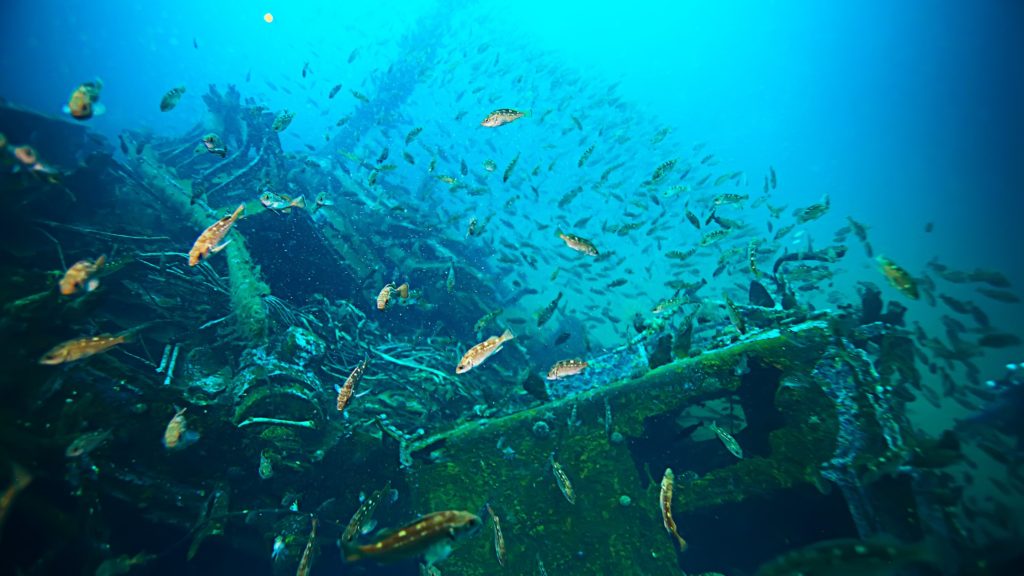Bug Light Shoal: Key Biscayne’s Newest Artificial Reef
Briana GibbsNovember 28, 2019

Artificial reefs bring biodiversity and baitfish to their locales. (Adobe)
In June a new artificial reef was installed 2.4 miles off the Cape Florida Lighthouse at the southern tip of Key Biscayne. The project, a partnership between Miami-Dade County and the Florida Fish and Wildlife Conservation Commission, is called Bug Light Shoal after a decommissioned marker which was removed in 2014. The reef gives anglers another place to collect baitfish before going fishing offshore.
The Miami-Dade County Artificial Reef Program has three goals: habitat restoration, fisheries management and increasing recreational diving opportunities. Around the County, there are 28 artificial reefs that have been installed near and far from shore. These reefs are made up of large vessels, retired oil platforms, tons of limestone and cast concrete, as well as surplus U.S. Army military tanks.
Artificial reefs are constructed using environmentally safe materials that will allow for colonization by reef-building plants and animals. Most artificial reefs in the County are created using steel and concrete. Bug Light Shoal was constructed of 150 tons of concrete and 150 tons of limestone rock.
Key Biscayne’s shores boast a number of coral reefs and wrecks for divers to visit and explore. These sit in water as shallow as 30 inches and as deep as 110 feet. The dive sites include sunken barges (Belzona Barge, Belcher Barge), freighter Ophelia Brian and a retired 727 airplane named the Spirit of Miami which was placed on a sandbar in 1993.
Reactions from members of the public depend on perspective. Local diver Mike Horton said that “considering the state of our coral reefs, these artificial ones provide a cool way to see how they can bring a resurgence of life into an area.”
But longtime Miami spear fisherman Andres Preshel said “gamefish seem to be the least plentiful, considering that everyone has access to these reefs.”
Reef-building organisms need hard substrate in order to settle and grow. Coral reefs bring increased fish diversity and provide locations for diving ecotourism. Due to the high number of unique artificial reefs and the various ships off its coasts, the Miami area is a diving hot spot. The fish divers see on the wrecks include angelfish, grunts, snappers, hogfish, eels, groupers, sea turtles, barracudas, sponges, sea fans, and both hard and soft corals.
Artificial reefs are protected since the early 1990s, because the Key Biscayne Artificial Reef Site has been designated as a Special Management Zone by NOAA. Within this zone fish traps, bottom long lines and spear guns of any type (including slings and pole spears) are prohibited with the intention of limiting the potential impact of unrestricted fishing pressure. This allows for other forms of recreational fishing and recreational diving to occur at these locations.


